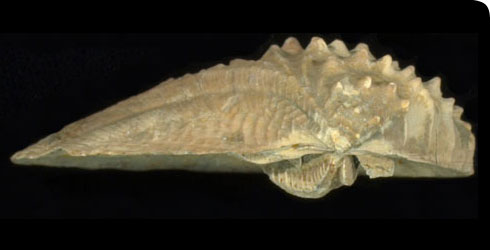Biology and ecology
By studying the rocks that Myophorella lusitanica is found in, and by comparison with Neotrigonia we can deduce some information about how Myophorella lusitanica lived.
Myophorella lusitanica lived by
- burrowing into sand and mud in warm shallow marginal-marine waters with regular influence of freshwater from rivers.
- creating burrows just below the surface of the sand or mud
- filtering particles out of the water to fed.
Myophorella lusitanica had
- thick shells
- big well developed teeth uniting the two valves (shells).
These features would have helped reduce the threat from predators and reduce the danger of being broken if washed out of its burrow.
Toolbox
Neotrigonia
These Mollusca are the only surviving genus of the once diverse and widespread Trigoniacea,
Neotrigonia have primitive features such as
- an unfused mantle
- filibranchiate ctenidia
Neotrigonia have a large active and muscular foot and a ctenidial ciliary pattern resembling that of the Unionacea.
The shell is non-streamlined and has pronounced radial omamentation.
Neotrigonia live
- infaunally
- near the sediment surface
Neotrigonia are filter feeders. They use their their large muscular feet to burrow rapidly, despite their shell morphology.
